Python How To Get All Files In A Directory
Using the os module and the os.listdir() function:
One of the most straightforward methods to get all files in a directory is by using the os module and its listdir() function. This function returns a list of all files and directories in the specified path. To get only the files, we can filter out the directories using the os.path.isfile() function. Here’s an example of how to implement this approach:
“`python
import os
def get_all_files(directory):
files = []
for file in os.listdir(directory):
if os.path.isfile(os.path.join(directory, file)):
files.append(file)
return files
directory = ‘/path/to/directory’
all_files = get_all_files(directory)
“`
Utilizing the pathlib module:
The pathlib module provides an object-oriented interface for working with file system paths. It offers an efficient and elegant way to get all files in a directory. The Path class of this module has a glob() method that allows us to search for files using wildcard patterns. Here’s an example:
“`python
from pathlib import Path
def get_all_files(directory):
path = Path(directory)
files = [str(file) for file in path.glob(‘*’) if file.is_file()]
return files
directory = ‘/path/to/directory’
all_files = get_all_files(directory)
“`
Employing the glob module:
The glob module is another option to get all files in a directory. It simplifies the process by using wildcard patterns to match files and directories. The glob() function returns a list of file names that match the specified pattern. Here’s an example:
“`python
import glob
def get_all_files(directory):
pattern = directory + ‘/*’
files = [file for file in glob.glob(pattern) if not os.path.isdir(file)]
return files
directory = ‘/path/to/directory’
all_files = get_all_files(directory)
“`
Implementing the os.walk() function:
The os.walk() function is a more advanced way to get all files in a directory and its subdirectories. It generates the file names in a top-down, recursive manner. By iterating over the returned generator object, we can access all files in the given directory and its subdirectories. Here’s an example:
“`python
import os
def get_all_files(directory):
files = []
for root, directories, filenames in os.walk(directory):
for file in filenames:
files.append(os.path.join(root, file))
return files
directory = ‘/path/to/directory’
all_files = get_all_files(directory)
“`
Combining the os module with recursion:
Another approach to get all files in a directory is by combining the os module with recursion. This method involves creating a recursive function that iterates through all directories and files within a given directory. Here’s an example:
“`python
import os
def get_all_files(directory):
files = []
for root, _, filenames in os.walk(directory):
for file in filenames:
files.append(os.path.join(root, file))
for directory in directories:
files.extend(get_all_files(os.path.join(root, directory)))
return files
directory = ‘/path/to/directory’
all_files = get_all_files(directory)
“`
Using the fnmatch module:
The fnmatch module provides a way to filter file names based on shell-style wildcards. By combining fnmatch and os.listdir() functions, we can get all files in a directory that match a specific pattern. Here’s an example:
“`python
import fnmatch
import os
def get_all_files(directory, pattern=’*’):
files = []
for file in os.listdir(directory):
if fnmatch.fnmatch(file, pattern) and os.path.isfile(os.path.join(directory, file)):
files.append(file)
return files
directory = ‘/path/to/directory’
all_files = get_all_files(directory)
“`
Employing the os.scandir() function:
The os.scandir() function offers a more efficient way to get all files in a directory compared to os.listdir(). It returns an iterator yielding DirEntry objects, representing the directory entries for each item in the directory. By checking whether the entry is a file or a directory, we can filter out only the files. Here’s an example:
“`python
import os
def get_all_files(directory):
files = []
with os.scandir(directory) as entries:
for entry in entries:
if entry.is_file():
files.append(entry.name)
return files
directory = ‘/path/to/directory’
all_files = get_all_files(directory)
“`
Using the os.path module and the os.listdir() function:
The os.path module provides several functions to manipulate path names and check file properties. We can combine it with the os.listdir() function to get all files in a directory. By iterating through the list of directory contents and joining each item with the directory path using os.path.join(), we can obtain the complete file path. Here’s an example:
“`python
import os
def get_all_files(directory):
files = []
for file in os.listdir(directory):
file_path = os.path.join(directory, file)
if os.path.isfile(file_path):
files.append(file)
return files
directory = ‘/path/to/directory’
all_files = get_all_files(directory)
“`
Combining the glob module with recursion:
Last but not least, we can combine the glob module with recursion to get all files in a directory and its subdirectories. By passing the pattern ‘**’ to the glob module, it searches for all files and directories recursively. Here’s an example:
“`python
import glob
def get_all_files(directory):
files = [file for file in glob.glob(directory + ‘/**’, recursive=True) if os.path.isfile(file)]
return files
directory = ‘/path/to/directory’
all_files = get_all_files(directory)
“`
FAQs:
Q: How can I get all files in a folder using Python?
A: Python offers several methods to achieve this, including utilizing modules like os, pathlib, glob, and fnmatch. You can either iterate over the files using the os.listdir() function, leverage the flexibility of the pathlib module’s glob() method, or use the glob module itself. Additionally, the os.walk() function allows you to iterate through all files in a folder and its subdirectories.
Q: How do I read all files in a folder using Python?
A: After getting all the file names in a folder, you can easily read the contents of each file by opening it in a loop. Use the open() function to open each file in read mode, read its content using read() or readline(), and close the file using the close() method. Here’s an example:
“`python
for file in all_files:
with open(file, ‘r’) as f:
content = f.read()
# Process the content as required
“`
Q: How can I list all files in a directory and its subdirectories using Python?
A: One way to achieve this is by utilizing the os.walk() function. It generates file names in a top-down, recursive manner, allowing you to access all files within a directory and its subdirectories. Alternatively, you can combine the glob module with recursion by passing the ‘**’ pattern to the glob() function with the recursive=True parameter.
Q: How do I get all folders in a directory using Python?
A: To get all folders or directories within a directory, you can modify the methods mentioned earlier slightly. Instead of filtering files, filter for directories using functions like os.path.isdir() or os.scandir(). For example:
“`python
import os
def get_all_folders(directory):
folders = []
for file in os.listdir(directory):
if os.path.isdir(os.path.join(directory, file)):
folders.append(file)
return folders
directory = ‘/path/to/directory’
all_folders = get_all_folders(directory)
“`
Q: Can I use these methods to get files in other programming languages like Java or C#?
A: No, the methods demonstrated here are specific to Python. Other programming languages might have their own libraries or functions to achieve similar outcomes. However, the general idea of iterating over files in a directory is applicable to most languages.
Q: How can I list files in a directory with a specific extension using Python?
A: To list files with a specific extension, you can modify the filtering conditions within the code examples above. For instance, in the os.listdir() method, you can check the file extension using the os.path.splitext() function. Similarly, you can use related functions or methods in the other methods demonstrated.
Q: How can I list all files in a folder using the command prompt (CMD) or PowerShell?
A: To list all files in a folder using CMD or PowerShell, you can use the `dir` command in CMD or the `Get-ChildItem` cmdlet in PowerShell. For example, in CMD, open the command prompt, navigate to the desired directory using the `cd` command, and then run `dir /A:-D` to list all files in the current directory.
Python | List Files In A Directory
How To Get The List Of All Files In A Directory In Python?
Python is a popular programming language known for its simplicity and versatility. It provides a vast array of libraries and modules that make it easier for developers to accomplish various tasks, including working with files and directories. If you’re looking to retrieve a list of all files in a directory using Python, this article will guide you through the process.
To begin with, let’s discuss the different approaches you can take to obtain the list of files within a directory.
Using the os module:
Python’s built-in os module provides a range of functions for interacting with the operating system, including file and directory operations. You can utilize the os module to access the list of files within a directory. Here’s how you can do it:
“`python
import os
def get_files_in_directory(directory):
files = []
for file in os.listdir(directory):
if os.path.isfile(os.path.join(directory, file)):
files.append(file)
return files
# Example usage
directory = ‘/path/to/directory’
file_list = get_files_in_directory(directory)
print(file_list)
“`
In the above code snippet, we first initialize an empty list called `files`. Then, using the `listdir()` function from the os module, we obtain a list of all items within the specified directory. We iterate through each item, checking if it is a file using the `isfile()` function. If it is indeed a file, we add it to our `files` list. Finally, we return the list of files.
Using the pathlib module:
Python’s pathlib module, introduced in Python 3.4, offers a more intuitive and high-level approach to handle file paths and directories. It provides an object-oriented API, making file operations more straightforward. Let’s see how you can leverage this module to retrieve the list of files in a directory:
“`python
from pathlib import Path
def get_files_in_directory(directory):
path = Path(directory)
files = [file.name for file in path.iterdir() if file.is_file()]
return files
# Example usage
directory = ‘/path/to/directory’
file_list = get_files_in_directory(directory)
print(file_list)
“`
In the above code snippet, we create a `Path` object by passing the directory path to it. The `Path` object represents the directory and allows us to perform various operations on it. Using the `iterdir()` function, we obtain an iterator over all items within the directory. We then filter out only the files using `is_file()`. Finally, we extract the names of the files and return them as a list.
FAQs:
1. Can I retrieve files from subdirectories as well?
Absolutely! The above methods retrieve files from both the given directory and its subdirectories. If you only want to obtain files from the root directory, you can modify the code accordingly.
2. How can I sort the files in the list alphabetically?
You can sort the list of files alphabetically using the `sorted()` function. For example:
“`python
file_list = sorted(file_list)
“`
3. Is it possible to filter files based on their extensions?
Certainly! You can filter the files based on their extensions using various techniques. Here’s an example that retrieves only the files with a `.txt` extension:
“`python
files = [file for file in path.iterdir() if file.suffix == ‘.txt’]
“`
4. How can I retrieve files with specific names?
If you want to retrieve files with specific names, you can modify the code to add conditions while iterating. Here’s an example to retrieve only files containing the word “example” in their name:
“`python
files = [file for file in path.iterdir() if file.is_file() and ‘example’ in file.name]
“`
5. Is it possible to obtain the full path of each file?
Absolutely! Both the `os` and `pathlib` approaches provide the option of retrieving the full path of each file. For the `os` approach, you can modify the `files.append()` line to `files.append(os.path.join(directory, file))`. For the `pathlib` approach, you can use `str(file)` to obtain the full path.
Conclusion:
Retrieving the list of files in a directory is a common task while working with files in Python. With the help of the `os` or `pathlib` modules, you can easily accomplish this task while maintaining code simplicity and flexibility. By following the techniques described in this article, you’ll be able to efficiently retrieve the list of files in any directory of your choice.
How To Get All Files In A Directory Recursively In Python?
When working with file systems in Python, it is often necessary to retrieve a list of all files residing within a given directory, including any files residing in its subdirectories. This process is deemed as “recursively” exploring the directory structure. In this article, we will delve into the steps required to accomplish this task using Python, as well as provide explanations and code examples along the way.
Python offers a versatile set of tools for file system manipulation, and with the help of the `os` module, we can easily traverse directories and extract files within them. The `os` module provides several functions and methods to retrieve information about files, directories, and the file system in general. One such function is the `os.walk()` function, which traverses a directory recursively and generates a tuple-based structure containing information about each directory it encounters.
To get all files in a directory recursively, we can utilize the `os.walk()` function in combination with some Python list manipulation techniques. The following steps outline the process:
1. Import the necessary module:
“`
import os
“`
2. Define a function to retrieve all files recursively:
“`
def get_files(directory):
file_list = []
for root, directories, files in os.walk(directory):
for file in files:
file_list.append(os.path.join(root, file))
return file_list
“`
In the above code snippet, we define a function called `get_files` that takes a directory path as a parameter. Within the function, we initialize an empty list to store the file paths. We then utilize the `os.walk()` function, which generates a tuple (`root`, `directories`, `files`) for each directory it traverses. We iterate over the `files` list provided by `os.walk()` and use `os.path.join()` to construct the complete file path by concatenating the `root` and the current file name. Finally, we append the constructed file path to the `file_list`. This process is repeated for each file encountered until the entire directory structure has been traversed. Finally, we return the `file_list` containing all the file paths.
3. Call the `get_files` function with the desired directory path:
“`
all_files = get_files(‘/path/to/directory’)
“`
By calling `get_files(‘/path/to/directory’)`, we obtain a list of all file paths present in the specified directory (‘/path/to/directory’) and its subdirectories.
Now that we have covered the steps to retrieve all files in a directory recursively, let’s address some frequently asked questions related to this topic:
FAQs:
Q: Can files of a specific file extension be obtained using this method?
A: Yes, you can filter files based on their extension by adding a conditional statement within the inner loop of the `get_files` function. For example, if you only want to retrieve “.txt” files, you can modify the inner loop as follows:
“`python
for file in files:
if file.endswith(‘.txt’):
file_list.append(os.path.join(root, file))
“`
Q: What happens if the provided directory path does not exist?
A: If the directory path passed to the `get_files` function does not exist, the `os.walk()` function will raise a `FileNotFoundError`. It is good practice to handle such exceptions using appropriate error handling techniques.
Q: Is there any limit to the depth of recursive traversal?
A: The `os.walk()` function continues to traverse the directory structure until all directories within the starting directory (and its subdirectories) have been visited. There is no inherent depth limit imposed by the function itself.
Q: Are symbolic links followed during traversal?
A: By default, symbolic links are followed during traversal. This means that if a symbolic link is encountered, `os.walk()` will enter the target directory pointed to by the link and continue exploration.
Q: Are file permissions taken into account during traversal?
A: Yes, file permissions are taken into account. If a file does not have permission to be read by the executing user, it will not be included in the list of retrieved files.
In conclusion, retrieving all files in a directory recursively in Python can be achieved by utilizing the `os.walk()` function provided by the `os` module. By following the steps outlined in this article, you will be able to traverse a directory structure and obtain a list of all files present within it, including files in its subdirectories. Additionally, we addressed some common questions related to this topic, providing further insights into the process.
Keywords searched by users: python how to get all files in a directory Get all file in folder Python, Read all file in folder Python, Python list all files in directory and subdirectories, Get all folder in directory Python, Get all file in folder Java, Get all file in folder C#, Python list files in directory with extension, List all file in folder cmd
Categories: Top 89 Python How To Get All Files In A Directory
See more here: nhanvietluanvan.com
Get All File In Folder Python
Python is a widely-used programming language that offers a wide range of functionalities, including the ability to work with files and folders. One common task that programmers often encounter is the need to get all the files within a folder in Python. In this article, we will explore different methods to achieve this task, providing in-depth explanations and code examples.
Method 1: Using os module
The os module in Python provides a variety of functions for interacting with the operating system. One of the functions it offers is the os.listdir() function, which returns a list of all files and directories in a specified directory.
To get all the files in a folder, we can first use the os.listdir() function to retrieve all the files and directories within the folder. Then, we can check whether each item in the list is a file or a directory using the os.path.isfile() function. If an item is a file, we add it to our final list.
Here is an example implementation of the above method:
“`
import os
def get_all_files(folder_path):
file_list = []
for item in os.listdir(folder_path):
item_path = os.path.join(folder_path, item)
if os.path.isfile(item_path):
file_list.append(item_path)
return file_list
folder_path = ‘/path/to/folder’
all_files = get_all_files(folder_path)
print(all_files)
“`
Method 2: Using glob module
The glob module in Python provides a convenient way to find all the pathnames matching a specified pattern. It supports both Unix-style pathname pattern expansion and importing of all matching files in a single function call.
To get all the files in a folder using the glob module, we can use the following code:
“`
import glob
def get_all_files(folder_path):
file_list = glob.glob(folder_path + ‘/*’)
return file_list
folder_path = ‘/path/to/folder’
all_files = get_all_files(folder_path)
print(all_files)
“`
In this code, we use the glob.glob() function to match all the files within the specified folder_path using the ‘*’ wildcard character. The function returns a list of file paths that match the pattern.
FAQs:
Q1. Can I get all the files from subfolders too?
A1. Yes, the above methods can retrieve files from subfolders as well. By iterating over the list of files and directories using os.listdir() or glob.glob() within each subfolder, you can recursively obtain all the files from subfolders too.
Q2. How can I filter files based on certain criteria?
A2. Both methods presented above provide a list of all files in a folder. To filter files based on specific criteria, you can implement additional checks within the for loop. For example, you can check the file extension using the os.path.splitext() function and add only files with a specific extension to the final list.
Here is an example that filters files based on the ‘.txt’ extension:
“`
import os
def get_all_files(folder_path, extension):
file_list = []
for item in os.listdir(folder_path):
item_path = os.path.join(folder_path, item)
if os.path.isfile(item_path) and item.endswith(extension):
file_list.append(item_path)
return file_list
folder_path = ‘/path/to/folder’
extension = ‘.txt’
all_files = get_all_files(folder_path, extension)
print(all_files)
“`
Q3. How can I get the file name without the full path?
A3. You can extract the file name from the full path using the os.path.basename() function. Here’s an example:
“`
import os
def get_all_files(folder_path):
file_list = []
for item in os.listdir(folder_path):
item_path = os.path.join(folder_path, item)
if os.path.isfile(item_path):
file_list.append(os.path.basename(item_path))
return file_list
folder_path = ‘/path/to/folder’
all_files = get_all_files(folder_path)
print(all_files)
“`
By using os.path.basename(), we can easily extract the file name without the full path.
In conclusion, Python provides multiple methods to get all files within a folder. The os module and the glob module are powerful tools that make this task straightforward. Whether you need to retrieve files from the main folder or its subfolders, filter files based on specific criteria, or extract file names without the full path, Python has the tools to handle these requirements efficiently and effectively.
Read All File In Folder Python
Introduction:
When working with Python, there may arise a need to extract or process information from multiple files within a folder. Instead of manually opening each file one by one, Python provides an efficient and effective way to read all files in a folder. In this article, we will explore various methods to achieve this task along with their implementation in Python. Additionally, we will address some frequently asked questions related to file operations in Python.
Table of Contents:
1. Reading a Single File in Python
2. Reading Multiple Files in a Folder
a. Using os module
b. Using glob module
3. Implementing File Reading Methods
4. Frequently Asked Questions (FAQs)
1. Reading a Single File in Python:
Before diving into reading multiple files, let’s quickly refresh our knowledge on how to read a single file in Python. Python’s built-in open() function is commonly used to open a file and read its content. Here’s a basic example of reading a file:
“`python
file = open(“file.txt”, “r”)
content = file.read()
print(content)
file.close()
“`
In the code above, we open the file.txt file in read mode (“r”), then read its contents using the read() method, and finally close the file using the close() method to free resources.
2. Reading Multiple Files in a Folder:
Now, let’s explore how to read all files within a folder using Python. There are two popular methods that we will discuss in this article:
a. Using the os module:
The os module in Python provides a range of functions to interact with the operating system. One of its functions, os.listdir(), allows us to retrieve a list of all files and directories within a specific folder. By iterating over this list, we can read each file individually. Here’s an example:
“`python
import os
folder_path = “path/to/folder”
files = os.listdir(folder_path)
for file_name in files:
if os.path.isfile(os.path.join(folder_path, file_name)):
file = open(os.path.join(folder_path, file_name), “r”)
content = file.read()
print(content)
file.close()
“`
In the code above, we first specify the folder path where the files are located. Using os.listdir(), we retrieve all files and directories within this folder. We then iterate through this list and check if each item is a file (avoiding subdirectories). Finally, we open and read each file using the open() function as we did before.
b. Using the glob module:
The glob module in Python provides a powerful filename pattern matching mechanism. It allows us to retrieve files matching a specific pattern within a folder. We can use this module to read all files by specifying a pattern that matches all file names within the folder. Here’s an example:
“`python
import glob
folder_path = “path/to/folder”
files = glob.glob(folder_path + “/*”)
for file_name in files:
file = open(file_name, “r”)
content = file.read()
print(content)
file.close()
“`
In the code snippet above, we use glob.glob() to retrieve a list of all file names within the specified folder. This list is then iterated, and each file is read using the open() function.
3. Implementing File Reading Methods:
To make the file reading process more versatile and efficient, we can encapsulate the above code into a reusable function. Here’s an example of such a function:
“`python
import os
def read_all_files(folder_path):
files = os.listdir(folder_path)
for file_name in files:
if os.path.isfile(os.path.join(folder_path, file_name)):
file = open(os.path.join(folder_path, file_name), “r”)
content = file.read()
print(content)
file.close()
# Usage:
read_all_files(“path/to/folder”)
“`
By encapsulating the code within a function, we can simply invoke this function whenever we need to read all files within a specific folder.
4. Frequently Asked Questions (FAQs):
Q1. Can I read files from subfolders within the main folder?
Yes, the above methods can be modified to include subfolders. By using appropriate conditional statements to distinguish between files and directories, you can iterate through all subfolders as well.
Q2. How can I read specific types of files (e.g., .txt, .csv) only?
You can modify the file reading methods by incorporating conditional statements to filter files based on their extensions (e.g., using the `file_name.endswith(‘.txt’)` condition). This allows reading only specific types of files within the folder.
Q3. Are there any performance considerations when reading multiple files?
Reading a large number of files can impact performance due to I/O operations. Consider using efficient techniques like multi-threading or asynchronous programming to optimize reading multiple files simultaneously.
Conclusion:
In this article, we explored various methods to read all files within a folder using Python. We covered two popular approaches: the os module and the glob module. Both methods provide efficient ways to iterate through files and read their contents. By encapsulating the code into reusable functions, we can simplify file reading operations. Additionally, we addressed some frequently asked questions related to reading multiple files in Python.
Images related to the topic python how to get all files in a directory

Found 49 images related to python how to get all files in a directory theme
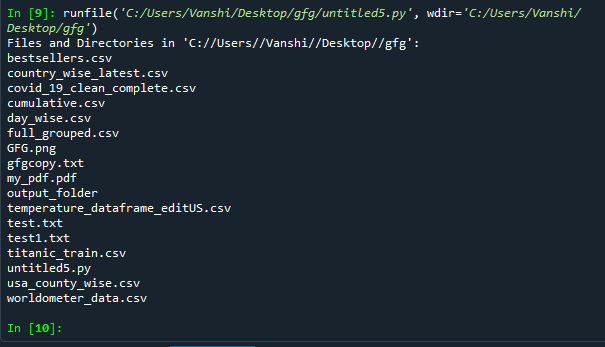

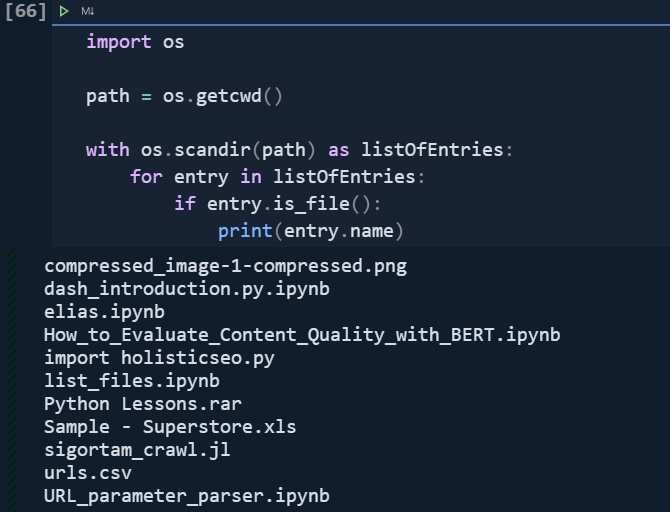





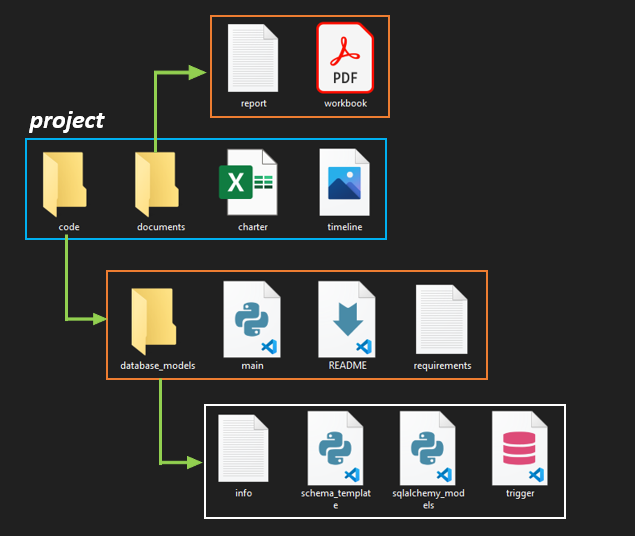



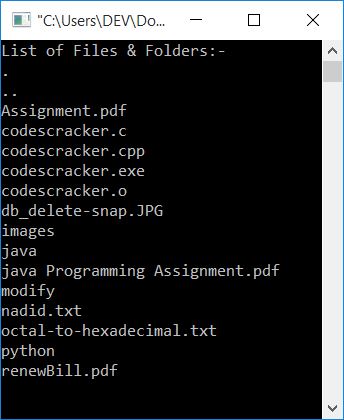



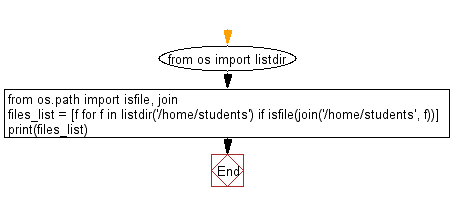

![File Handling in Python [Complete Series] – PYnative File Handling In Python [Complete Series] – Pynative](https://pynative.com/wp-content/uploads/2021/07/file_handling_in_python.png)

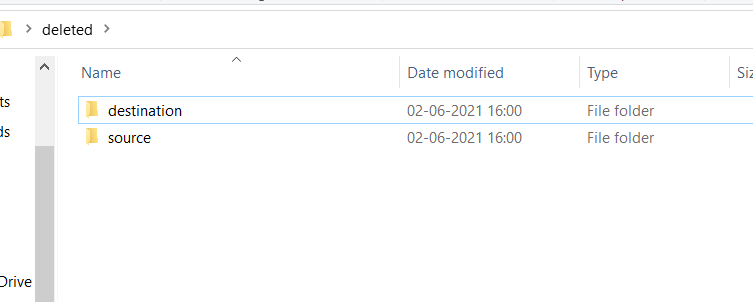
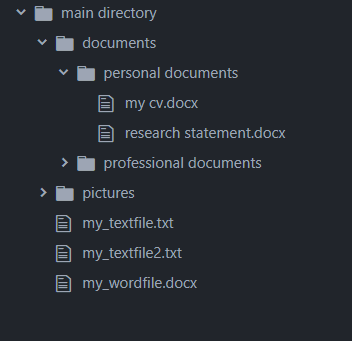



![Python Copy Files and Directories [10 Ways] – PYnative Python Copy Files And Directories [10 Ways] – Pynative](https://pynative.com/wp-content/uploads/2021/06/python-copy-files.png)



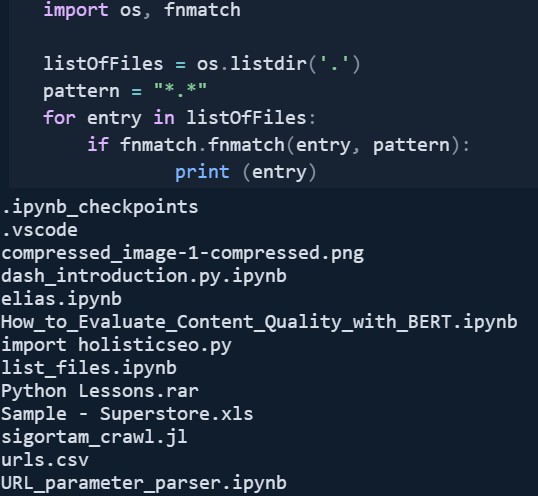










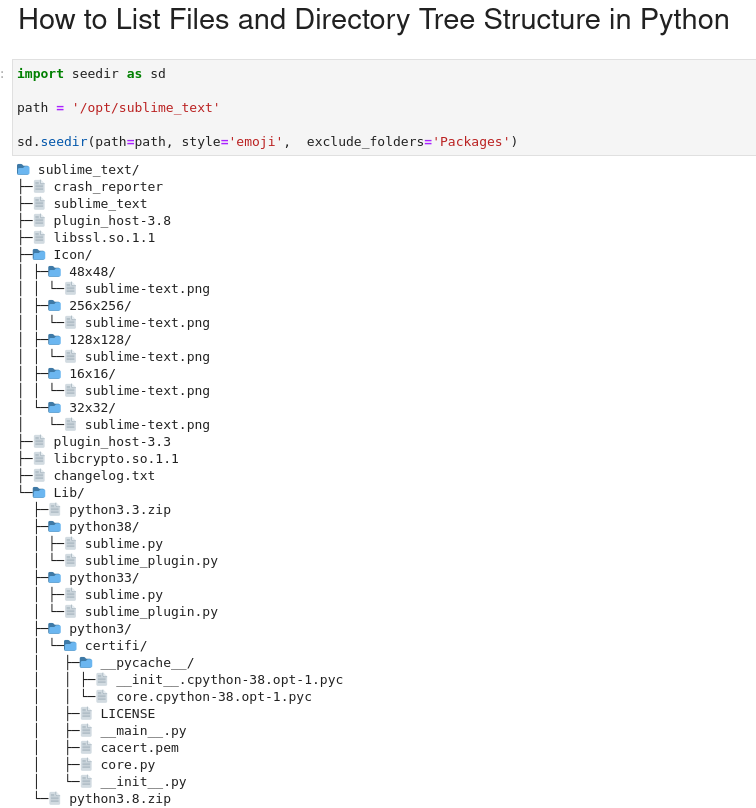

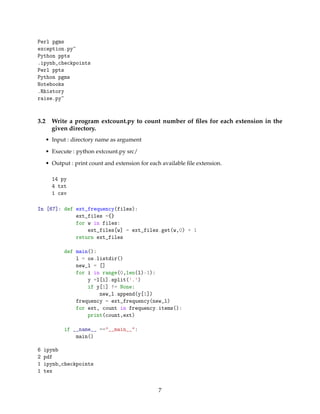

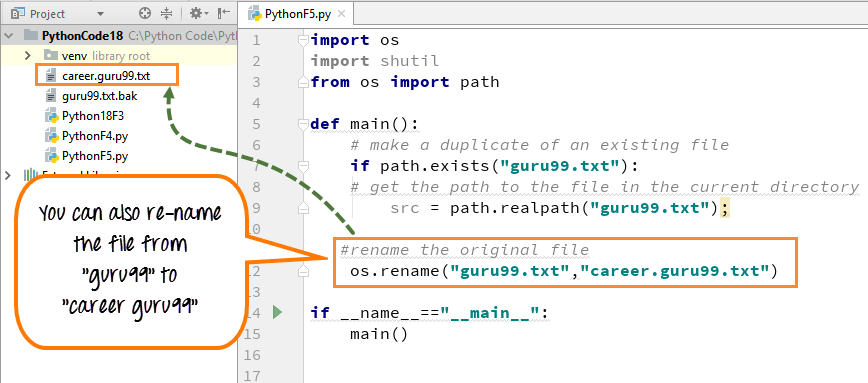

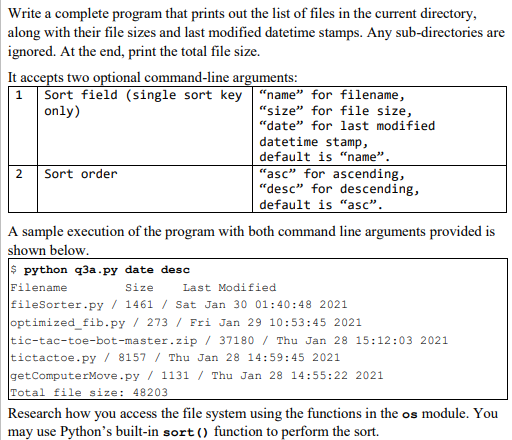


Article link: python how to get all files in a directory.
Learn more about the topic python how to get all files in a directory.
- How do I list all files of a directory? – python – Stack Overflow
- Python – List Files in a Directory – GeeksforGeeks
- Python List Files in a Directory [5 Ways] – PYnative
- Python – List Files in a Directory – GeeksforGeeks
- How to Get a List of All Files in a Directory With Python
- Get a List of All Files in a Directory with Python (with code)
- How To Get All Files In A Directory In Python?
- 3 Time-Saving Ways to Get All Files in a Directory using Python
- Python List all Files in a Directory – Spark By {Examples}
- Here is how to list all files of a directory in Python – PythonHow
See more: nhanvietluanvan.com/luat-hoc